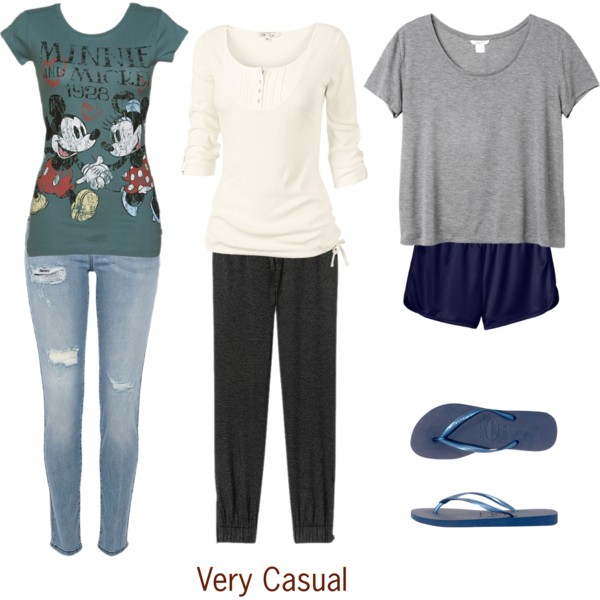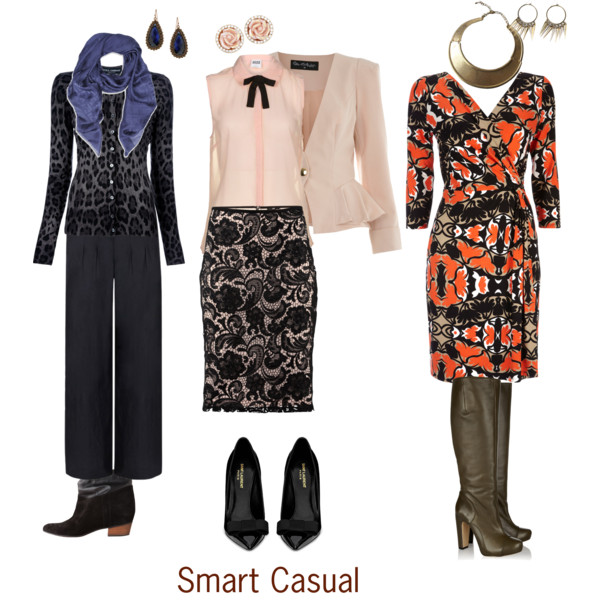Smart Casual Clothes
I've been a little bit confused about what clothing elements make the difference between Casual and Smart Casual? Can smart casual be worn in most of casual situations? Hope for your help as I'd like to look smart in everyday life and casual clothes seem to not always help with this.
Jane's answer... Great question! Many people get confused with the levels of clothing! I’d say that yes, smart casual can be worn in most casual situations. It’s a good thing to look smart in everyday life. It allows you to feel good about yourself and the people around you will admire and respect the way you look.
Levels of dress


Part of the challenge with levels of dressing is that dress codes and dress levels are open to interpretation. The scale between casual and smart casual is a sliding scale, rather than a hard line. For example, while there are some clothes that are clearly in the casual category, such as track suits and exercise wear; or clearly in the smart casual category such as a nice quality figure skimming dress; there are other clothes that could be in either category dependent on your environment, the time of day and how you put together an outfit. For example, dark jeans can be styled to be casual (worn with a t-shirt) or smart casual (worn with a camisole, a jacket, and nice quality necklace and earrings). Light jeans are typically always seen as more casual.
The trick is to understand a bit about levels of clothing, and levels of occasion. Then match the level of dress to the level of occasion. Other things to consider include:
- Audience -- think about who you'll be with and how they might be dressed
- Location -- will you be in a casual home or garden setting, or a more formal environment such as a smart restaurant or up-market hotel? Where you are in the world will also have an impact on the level of dress. For example, large cities typically have smart dress codes than country towns; New York's smart casual is typically smarter than Los Angeles
- Time of day -- evening events typically require smarter clothing than day time events. For example, fabrics for evening may have some sheen, or shine, or be more delicate
- Weather -- dressing for cooler weather means taking outerwear into consideration, as well as your main outfit -- don't spoil your appearance with a casual coat if the event requires a smarter outer garment
- Your intent -- a relaxed social occasion with friends should require less careful planning than an important business meeting!
Key elements of casual dress include:
- Color – more colourful
- Coordination – more creatively put together
- Fabric – more textured and often patterned or screen-printed
- Construction – less tailored, more unstructured, less fitted silhouette
- Accessories – fun, exotic, ethnic, matt and colourful
Key elements of formal dress include:
- Construction – clothes have more structure, more tailored silhouette
- Fabric – smoother, better quality fabrics
- Color – darker skirts, pants and jackets, lighter shirts and tops
- Accessories –better quality, minimal jewelry -- often precious metals
- Styles – more conservative, refined and classic
The formal-casual continuum:
Many layers<----->Few layers
Collars<----->Collarless
Dark colors<----->Light, bright, and pastel colors
Smooth fabrics<----->Textured fabrics
Shine and sheen<----->Matt
Tailored<----->Untailored
Structured<----->Unstructured
Solid colors<----->Patterns
Subdued patterns<----->Loud patterns
Heels<----->Flat shoes
Pany hose<----->Bare legs
Classic pants<----->Track pants
Quality fabrics<----->Inexpensive fabrics
Well groomed<----->Relaxed grooming
Makeup<----->No makeup
Refined, classic, conservative styles<----->High fashion, unusual styles
Related article...
> Understanding women's business dress codes
Comments for Smart Casual Clothes
|
||
|
||
Like This Page?
"Your style makeover may require a few tweaks or a total re-think. Using a mix of science and art I show you how to discover your style and look great every day.
Hi, I'm Jane Liddelow, the Personal Image Consultant and Stylist responsible for this site. Find out more about me here."
